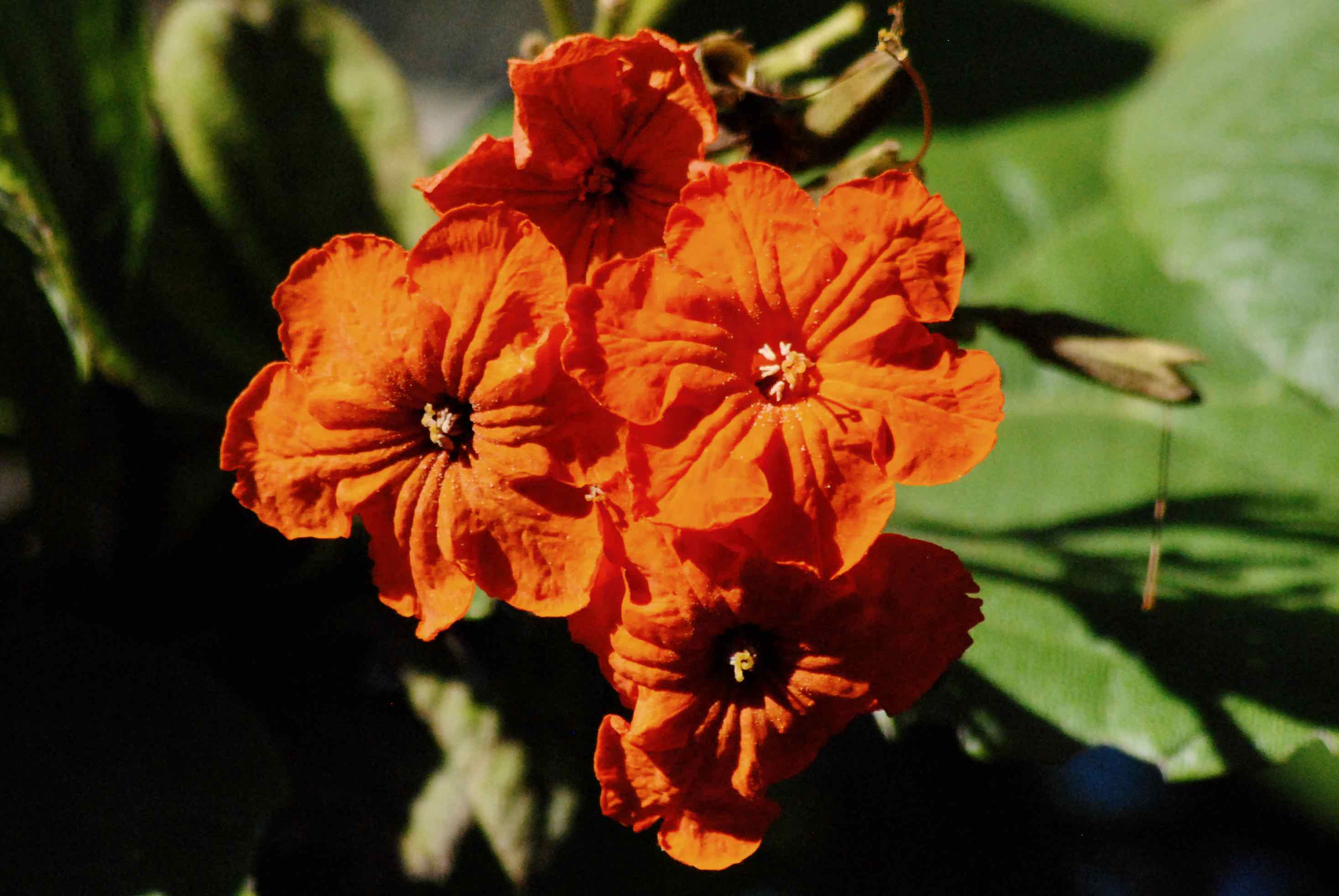
Geiger Tree, photographed at J.N. "Ding" Darling National Wildlife Refuge, Sanibel, Lee County, in October 2016.
There are more renowned pirates than John H. Geiger. Blackbeard for one. Honus Wagner for another.
But Geiger can lay claim to something that, to our knowledge, no other pirate can, be it the high seas swashbuckler variety or baseball player from Pittsburgh. He had a tree named after him. Not just any tree — one of the most beautiful of Florida native trees. The Geiger tree, Cordia sebestena.
At least we think it’s a Florida native, but we’ll get to that in a moment.
To be fair, Geiger had a much more varied career than most pirates. Allegedly a buccaneer in his younger days, Geiger was a harbor pilot and a master wrecker who made a fortune salvaging the cargos of sunken ships and becoming one of Key West’s leading citizens. If you tour the Audubon House in Key West, now a museum, you’re actually visiting Geiger’s home.
As the story goes, John James Audubon of Audubon Society fame, visited the home as Geiger’s guest in 1832 while on a trip painting the birds of Florida. Geiger had planted two cordia trees in his yard he had picked up in Cuba. Audubon used one of them in his painting of a white-crowned pigeon and, while discussing the painting, referred to it as the “Geiger tree.” The name stuck.
It is undoubtedly beautiful, with its large, flaming orange flowers, but whether it is native to Florida is a matter of some debate. As we said, Geiger picked up the trees while in Cuba, and some argue that the Geiger tree is native to the Caribbean but naturalized to Florida. Others say it is native to the state but only to the Keys and the extreme southern end of Peninsula — mostly what is now Everglades National Park. Geiger tree is also native to southern Mexico, Central America and South America.
The Atlas of Florida Plants cites wild populations growing in three counties: Lee, Miami-Dade and Monroe. The U.S. Department of Agriculture’s PLANTS database considers it introduced — a non-native. But the Institute for Regional Conservation in Delray Beach says extensive research “indicates” that the Geiger tree is in fact a Florida native. We’ll go with the local pros.
Regardless of its status, it’s now widely used in landscapes throughout South Florida.
Geiger trees are on the modest side as trees go, reaching 10 to 25 feet tall, sometimes hitting 30. Favorite habitats include the edges of hammocks; it grows in full sun but can take some shade as well. It can tolerate salt spray but not long-term saltwater flooding.
Geiger tree is not frost tolerant, which limits how far north it can grow.
The leaves are large, four to nine inches long — it’s also called largeleaf Geiger tree — dark green and sandpaper rough. The flowers are two inches across, clustering at the branch tips; they bloom year-round, but peak in spring and summer. Their beauty rivals that of the royal poinciana, which is definitely not a Florida native.
Geiger tree fruit — technically called a drupe — are fairly large, one to two inches in diameter, and contain one to four seeds each. They turn from green to white when ripe. They’re edible, but their culinary value is debatable.
Other common names for Geiger tree include orange Geiger tree and Geigertree. The Geiger tree is a member of Boraginaceae, the forget-me-not family.
J.N. "Ding" Darling National Wildlife Refuge



